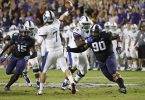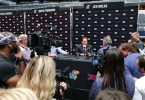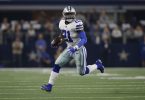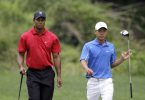Nine decades before basketball and football scandals blighted the reputation of Baylor University, infamy swept across the campus and city of Waco in what is still today one of the worst episodes in the American sports culture.
During halftime of the Baylor and Texas A&M Southwest Conference football game in 1926 at the Cotton Palace in Waco, a riot erupted on the field involving hundreds of students and fans from both schools.
The next morning A&M cadet Charlie Sessums was dead from a blood clot that had formed near the fracture in his skull, an injury resulting from the blunt force trauma stemming from a board or chair swung by an unknown assailant.
Author T.G. Webb has turned the subject matter into a true crime, whodunnit page turner, Battle of the Brazos: a Texas Football Rivalry, a Riot, and a Murder.
And despite an exhaustively researched book the reader is left with the same question that has lingered for 93 years.
Who killed Sessums, the senior cadet from Dallas?
Webb employed good use of the notes kept by Ila Floyd Benedict, a detective of the Pinkerton Detective Agency, hired by A&M alums in Waco who were either dissatisfied with the efforts of the local investigating agency or untrusting of it.
They might have had a good reason.
The assailant could well have been the nephew of Waco’s mayor, the suspicious Dr. Frank Connally, a member of well-placed family in Central Texas and cousin to U.S. Sen. Tom Connally.
The most substantive circumstantial evidence, if you’ll pardon the oxymoron, pointed to Edwin Connally, one of three subjects identified by Benedict at the conclusion of a five-week investigation in the aftermath of the incident, which led to Baylor and A&M ending sports competition between the two for four years.
He, along with the mayor’s cousin, Hubert Connally (someone at A&M – it is unknown who – believed Hubert was the killer, according to an unsigned document still kept at the school), and Baylor student C.T. Johnson were all on the field during the fight.
So was the mayor, who was attempting to diffuse the situation, specifically Sessums and whomever he was going after in the brawl. That person, according to witnesses, swung at Sessums twice unsuccessfully and connected on a third attempt, knocking Sessums to the ground.
The mayor could provide only dubious details as to what he saw despite being no more than three feet from the confrontation.
It was the only stain on an otherwise exemplary 30-year tenure for Baylor President Samuel Palmer Brooks, who comes off looking better than Kenneth Starr, but nonetheless both sympathetic and conflicted.
“In this letter I desire, for myself officially and for my colleagues of the faculty, to express to you and the other members of your family our sorrowful regrets over the death of your son,” Brooks wrote Sessums’ parents.
“Such words as these, in your grief, may seem cold, but I assure you as a parent that my heart beats in abiding sympathy with you both.”
Sessums’ father believed the assailant was Ed Connally, as well.
From Dallas, Alexander Sessums sent his own investigator to Waco to do some digging.
When the investigator, a man named Byrd White, asked about the mayor’s nephew, he was told by Brooks that he was unaware if the mayor had a nephew at Baylor. It was a preposterous response, considering the status of the family, not to mention Ed Connally was a senior member of the baseball team.
There were no heroes in this sad story. Even Byrd White turns out to be either inept or motivated by self-interest. It is unclear.
The details of the incident don’t paint an appealing picture of either of the two schools or their leaders. Webb describes the Aggie cadets as boorish bullies, who threatened Baylor and other schools with violence for any slight, perceived or otherwise, which were often nothing more than sophomoric, collegian hijinks.
And as Webb laid out his story, it was quite clear that it was indeed the cadets who started the fight. Two cadets from the stadium seating jumped onto the field and into a car driven out onto the field by a Baylor student during a halftime parade and carrying up to 12 (it’s unclear) Baylor coeds.
Baylor students and fans, on edge from near incidents with A&M in previous years, rushed from their seats to the field in the students’ defense.
A&M cadets, including Sessums — Webb presents evidence suggesting he joined the fray not as a peacekeeper — responded in kind.
A riot lasting 10 minutes ensued. Near the end, Sessums was seen chasing after a shorter, dark-complected man between the age of 21 and 25 who was wearing a “blue serge suit.”
That fit the description of Ed Connally to a T, who was also wearing a blue serge suit that day.
Authorities in Waco were not in any rush to seek justice in the case, and it was soon overshadowed months later by what became known at Baylor as the “Immortal Ten,” the bus-train crash involving the men’s basketball team.
Ed Connally (pneumonia) and Hubert Connally (car accident) were both dead within five years of the game.
With them likely went any answers.
Almost 100 years later, we still don’t know will killed Charlie Sessums, despite T.G. Webb’s best efforts.







